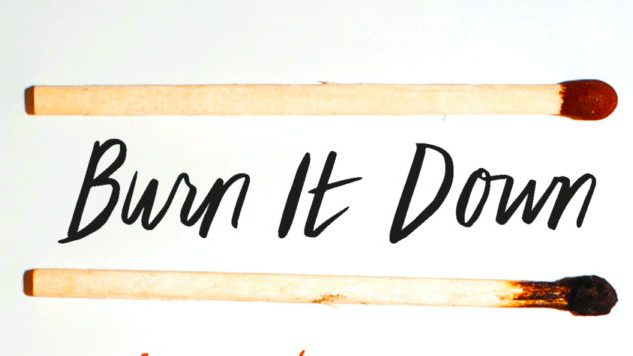Women’s Rage Gloriously Takes Center Stage in Burn It Down

Women are angry. From the MeToo Movement to the Women’s March to the Kavanaugh hearings, women standing up and letting their rage manifest as action has been a recurring theme our culture. Books like Rebecca Traister’s Good and Mad and Soraya Chemaly’s Rage Becomes Her have sought to explore that fury, its limits and its potential. Women’s anger, despite the onslaught of terrible events that have taken place even in the face of it, is finally being recognized as a formidable force.
But there are limitations to this new framing of women’s rage as well. While validating to see women’s anger taken seriously, there’s an overwhelming focus on anger as a catalyst—as a means to a specific, moral end. Anger isn’t just anger; it’s “righteous.” So it’s refreshing that in the essay collection Burn It Down: Women Write About Anger, edited by Lilly Dancyger, anger is given more room to breathe. Rather than being a means to an end, anger is treated as a rational response in the collection’s 22 essays. Here, being angry is valid in and of itself.
![]()
 I often think about the days of solid, brick cellphones. Of all the things I miss about them, the thing I miss the most is the ability to hurl one when I was mad. Throughout college, I had a small, three-part phone that, when chucked against the passenger side of my car or at the wall of my apartment, could easily be reassembled afterward. I’ve always hated confrontation and have struggled to express myself when I get angry. But throwing my cellphone became a consequence-free way of expelling the tension in my arms, my legs, my chest. And putting the thing back together was meditative, particularly when it required hunting around under the seats of my car for a wayward battery.
I often think about the days of solid, brick cellphones. Of all the things I miss about them, the thing I miss the most is the ability to hurl one when I was mad. Throughout college, I had a small, three-part phone that, when chucked against the passenger side of my car or at the wall of my apartment, could easily be reassembled afterward. I’ve always hated confrontation and have struggled to express myself when I get angry. But throwing my cellphone became a consequence-free way of expelling the tension in my arms, my legs, my chest. And putting the thing back together was meditative, particularly when it required hunting around under the seats of my car for a wayward battery.
The truth, of course, is that I threw my phone because I didn’t know how to communicate my anger, a reality that comes up again and again throughout Burn It Down. It’s no secret that women are conditioned to be nice and, by extension, to no yell or even be assertive when something has made them angry. In the essay “Why We Cry When We’re Angry”, Marissa Korbel writes about how frequently women cry when they’re angry and the frustration that response can create in a society where crying is feminine—and femininity is taken less seriously. It’s a vicious cycle; we struggle to express ourselves because we’ve never been given the space to do so, and as a result, we often begin to cry. And then we become easier to write off, which in turn creates more anger.
The struggle to communicate anger means that many of these essays feel deeply intimate, not only because anger is a personal experience but because it’s often a solitary one. For many women, it can create community with other women. In “On The Back Burner”, Dani Boss writes about her mother’s friends gathering to complain about the things that pissed them off—a community of frustration that will sound familiar to anyone who vents their grievances to friends. But Boss notes that the women would relate anger that they didn’t share in the moment; they would come up with comebacks and lash out within the safety of their friendships rather than at their bosses or husbands. Being an angry woman is risky and isolating when you have to swallow that rage until you’re in a space where you won’t be judged.
That isolation thrums beneath the surface in Sherly Ring’s essay “Crimes Against the Soul,” which discusses her experiences as a transgender lawyer. She writes about the hostility she’s experienced from judges, fellow lawyers and her own bosses in the face of her transition, facing personal attacks that not only erased her identity but threatened the career she was building. The contours of her story—the vulnerability that develops when the people who should be supporting you are the ones harming you—are familiar. Ring doesn’t spell them out, and she doesn’t need to. The essay is one of the collection’s most powerful as a result of what goes unsaid but can be clearly felt.
There are injustices large and small that bring about the fury in Burn It Down. Monet Patrice Thomas and Evette Dionne write about confronting racism, Shaheen Pasha about Islamophobi, and Minda Honey about the rifts in her relationship with her father. As Rowan Hisayo Buchanon notes, sometimes we’re angry because we’re hungry or, as Dani Boss notes, because of hormones. While our current discourse around women’s rage has focused on its crucial capacity to manifest change, Burn It Down stands as an important asterisk to that conversation. It’s a reminder that women are human. Our anger is powerful, yes, but sometimes we’re just pissed off at things that are pissing us off. Sometimes we’ll take to the streets, but sometimes we just need to throw a damn cellphone. And that is no less deserving of being taken seriously.
Bridey Heing is a freelance writer based in Washington, DC. More of her work can be found here.